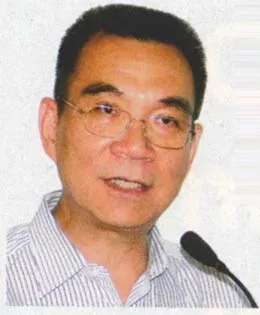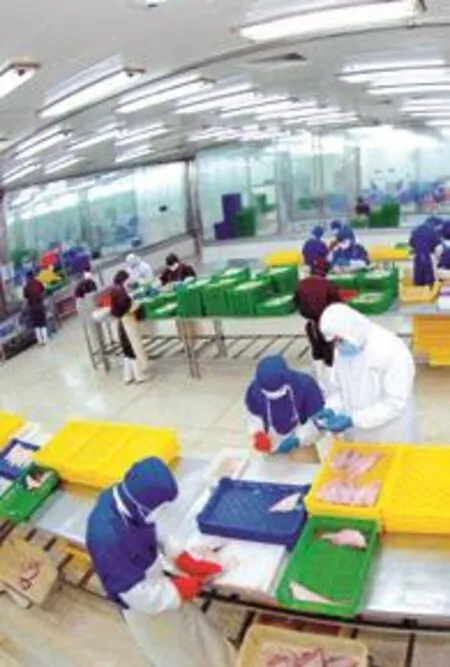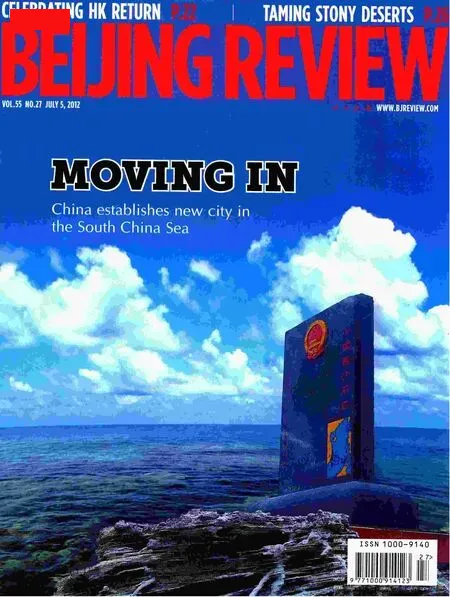A Driving Force for Recovery
A Driving Force for Recovery

Increasing pessimism about the Chinese economic outlook is emerging owing to the euro-zone debt crisis and gloomy recovery in the United States. Justin Yifu Lin, former Vice President of the World Bank, predicted that China can maintain 8-percent annual economic growth for the next two decades at the 14th NBER-CCER Conference on China and the World Economy in Beijing on June 24-26, an annual conference jointly held by the U.S. National Bureau of Economic Research and the China Center for Economic Research of Peking University. Edited excerpts of Lin’s views follow:
W e are observing a two-speed recovery. On the one hand, there are the high-income countries whose growth rate in 2010 and 2011 is estimated at 3.1 percent and 1.6 percent, respectively—far below the historical average following other crises. On the other hand, there are the developing countries which grew at 7.6 percent in 2010 and were likely to grow at 6 percent in 2011, returning to their pre-crisis rates. Developing countries, especially China and India, have increasingly become engines of growth of the world economy.
Now China is becoming an innovator in its own right. In many sectors in which China has comparative advantages, higher-income countries have graduated, or are close to graduating, from those sectors—for example, household electronics and the high-speed train. If China wants to maintain leadership in those sectors, China will need to develop the technology/product innovation when it reaches the frontier.
China can then become a global technological/industrial leader in those sectors. There are also some new sectors, such as green technology, which are important for China’s sustainable growth. China has the potential to be a leader due to its large domestic market.
But the income gap between China and the United States indicates that there is still a large technological gap between China and the industrialized West. In 2008 China’s per-capita income was 21 percent of U.S. per-capita income measured in purchasing power parity.
China has the potential to achieve another 20 years of 8 percent growth. By that time, China’s per-capita income measured in purchasing power parity may reach about 50 percent of U.S. per-capita income.
Triple imbalances
Given the inevitable slowdown in exports to high-income countries in the coming years and the need to reduce trade surplus, it is only prudent and pragmatic to consider ways to rebalance the Chinese economy towards domestic demand. The shift towards domestic demand represents the frst rebalancing.

WORLD KITCHEN: Workers process fsh to be exported to japan in Rongcheng Taixiang aquatic Food Products Co. Ltd. in Shandong Province in august 2011
A second form of rebalancing is a structural transformation to reduce income disparities. In spite of the general improvement of living standards, China has shifted from a relatively egalitarian society at the beginning of the reform and opening up in 1979 to a country with alarming income inequality. The Gini index reached 41.5 in 2005,approaching the level of Latin American countries. The widening of disparity may threaten social stability and hinder economic growth.
A third form of rebalancing is overlooked by macroeconomists. China’s extraordinary growth has come with almost inevitable environmental costs. There is the need to rebalance short-term growth and long-term environmental sustainability.
Specifcally, we are referring to the distribution of income between the households on aggregate and the corporate sector (essentially the functional distribution of income) and the distribution of income across households (or size distribution of income). We know from the national accounts and from industry data that a large share of Chinese national income accrues to large corporations and an increasing share of income accrues to rich people. Both groups have higher propensities to save than middle- and low-income households.
Shifting more income towards workers can rebalance income between rich and poor and between the corporate sector and households. This redistribution would also reduce external imbalances.
Removing distortions
In theory, following the comparative advantage to develop industries should lead to improvements in the distribution of income. More specifcally, when an economy’s development is in its early stage—with relatively abundant labor and scarce capital—enterprises will initially enter labor-intensive industries and adopt more labor-intensive technologies. This will create as many employment opportunities as possible and will transfer labor from traditional sectors to modern manufacturing and service sectors. Accompanied with the upgrading in the endowment structure, labor abundance will be replaced gradually by labor scarcity and capital scarcity will gradually become capital abundance. Accordingly, the cost of labor will increase and the cost of capital will decrease.
Because capital income is the major source of income for the rich, while labor is the major source of income for the poor, such changes in relative prices will make it possible to achieve economic growth and equity simultaneously.
In practice, however, the concentration of income in the corporate sector and rich people is a consequence of the dual-track reform process, which retains certain distortions as a way to provide continuous support to nonviable firms in the priority industries. Those distortions favor large corporations and rich people. Major remaining distortions include the concentration of fnancial services in the four large state-owned banks, the almost zero royalty on natural resources, and the monopoly of major service industries, including telecommunication, power and banking.
Those distortions contribute to the rising income disparity and other imbalances in the economy. This is because only big companies and rich people have access to credit services provided by the big banks, and the interest rates are artifcially repressed.
Therefore, it is imperative for China to address the structural imbalances by removing the remaining distortions in the finance, natural resources and service sectors so as to complete the transition to a well-functioning market economy.
Necessary reforms include removing the fnancial repression and allowing the development of small and local fnancing institutions, including local banks, so as to increase fnancial services, especially the access to credit for household farms as well as small and medium-size enterprises in manufacturing and service sectors.
The pension system should be reformed to remove the old retired workers’ pension burden from the state-owned mining companies and levy appropriate royalty taxes on natural resources; and we should also encourage entry and competition in the telecommunications, power and fnancial sectors.
Leading up to the global crisis, a burst of convergence occurred, as developing countries grew substantially faster than highincome countries. As we can see, this superior growth was widespread in developing countries across regions. This tendency is likely to continue as developing countries’ growth prospects remain favorable, and high income countries’ prospects remain subdued. This is not to say that the latter will not affect the former, but there is sufficient momentum in developing countries’ own demand—combined with increasing south-south economic linkages—that should sustain a gap in growth rates between developing countries and high-income countries. Fortunately this convergence has also been fairly broad-based across regions of the developing world.
Contributing to the world
If China can maintain the 8-percent growth rate in the coming years, China may contribute to the multi-polar growth world in many other ways in addition to GDP growth and trade.
There will be benefits shared and opportunities created by China’s growth—for both high-income countries and developing countries. For high-income countries, China’s growth will expand markets for their capital goods and intermediate goods exports.
Many developing countries are still major producers of agricultural and natural resource commodities. Chinese consumption and production growth will continue to support commodities and thus help these exporters.
In addition, the Chinese Government and Chinese firms will provide funds for natural resource and infrastructure investment in emerging markets and low-income countries. This is already happening, and it is likely to continue into the future. In particular, there is a growing role of Chinese finance in the African region—the developing region with the most constrained access to fnance.
The continued structural transformation of the Chinese economy will create other opportunities. As China undergoes industrial upgrading to more sophisticated product markets, it will leave the market space for other developing countries to enter the more laborintensive industries. Chinese enterprises are expected to relocate their existing production to other lower-wage countries as they upgrade to higher value-added industries, like Japan and East Asian economies did a few decades ago. The difference is that because of its size China may become a “l(fā)eading dragon” for other developing countries instead of a “l(fā)ead goose” in the traditional fying geese pattern of the international diffusion of industrial development.
liuxinlian@bjreview.com

